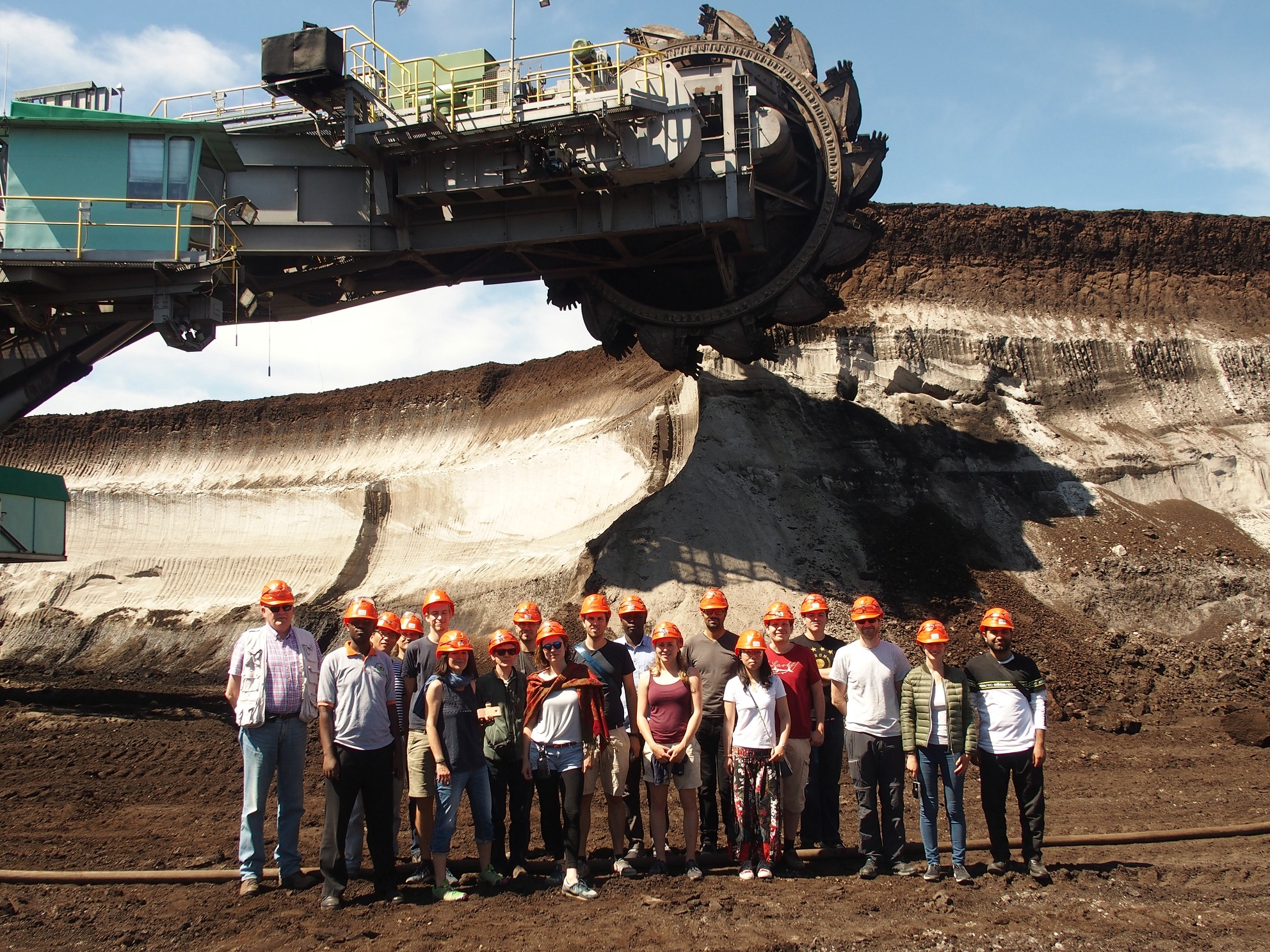Excursion to the mining area Leipzig and to the lake area Neuseenland

Report on a mining trip in 2017
The surrounding of Leipzig is marked by a post-mining landscape. More than 22 lakes were formed in the past decades by the intensive lignite mining, which has changed the landscape dramatically since the beginning of the 20th century.
On 9th June 2017 the International Café at UFZ organized under the guidance of Prof. Dr. Holger Weiß a whole-day trip to the so called “Neuseenland”, situated in the southern part of Leipzig. Prof. Weiß is geologist and head of the Department of Groundwater Remediation (GWS) at UFZ. His research focuses on the cleaning of contaminated groundwater, water resource management and the environmental impact of mining.
Our first aim was the active opencast mine “Schleenhain”, which includes a huge area of 2.500 ha. We were guided by Dr. Michael Struzina, mining engineer of the MIBRAG. Since 1990 this mining company runs both of the still active opencast mines in the southern part of Leipzig. The dimensions of the mines –founded in 1949 – are immense: before the lignite can be produced, they have to remove several million tons of spoil and large quantities of water have to be pumped out. Every year they produce 11 million tons of lignite and 35 million cubic meters groundwater and spoil each. The extracted lignite will be directly converted into electricity by the nearby Lippendorf power plant. This method to gain primary energy production – increasingly criticized under environmental and climate related aspects – will be continued in this area until 2040. The remediation of a self-regulating water balance and a multifunctional landscape will definitely be a challenge for future generations.
We were also guided to the mine water cleaning plant of the MIBRAG company, which reduces the iron content to 3 milligrams per liter due to the precipitation of iron hydroxide. Only in a distance of 1,2 km from here, the brown tinted river of Pleiße contains an even higher iron content, influenced by excavation material of older mining sectors.
In the afternoon we visited the lakes Hainer and Zwenkauer as examples for flood-alleviation and renaturalisation projects. On the basis of the new constructed settlement Kahnsdorf, which is directly situated on the edge of the lake Hainer, Prof. Weiß explained the different interests of the multiple stakeholders in this area. One question that has yet to be resolved is the impact of the rising groundwater levels once the active lignite mines close in about 20 years time. At that time the mining company MIBRAG will be released from liability and will no longer have to pump groundwater. It has yet to be decided, if the federal government or the federal states or even the community will be responsible to protect the houses from flooding of their basements and ground floors. Providing this protection will be costly and - bearing in mind that a lot of money from public and private investors was spent into the bank building of the lake - one could be really worried.
Just as remarkable is the high effort to dose lime into the lakes so that the pH value of the water can be balanced in a neutral range. With the aid of our pH test sticks we could see proof that this measure has already been achieved.
Our special thanks to Ralf Trabitzsch and Prof. Weiß (both Dep. GWS), who gave us an interesting insight into the lignite production and its impact as well as to the non-profit association “Friends of the UFZ”, who supported this event financially.
Barbara Timmel
